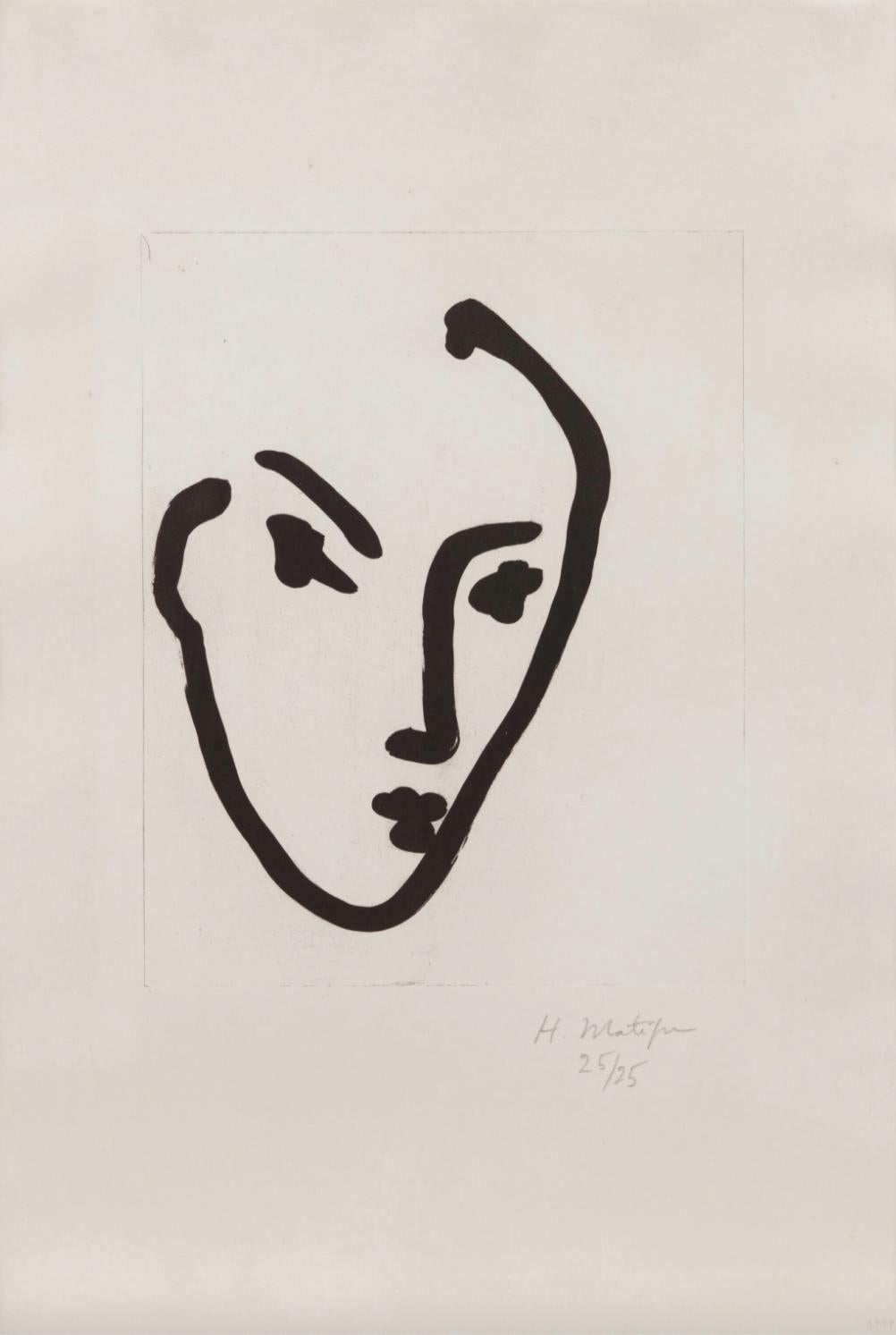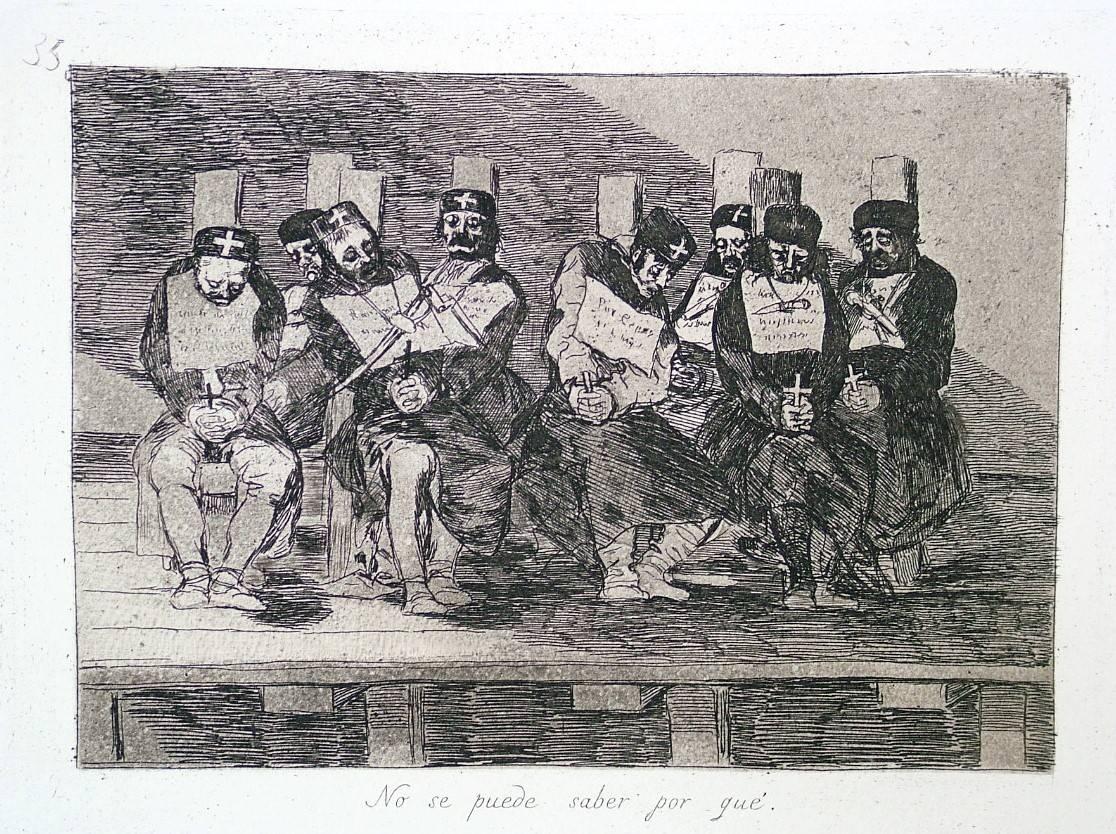Items Similar to Malchus of Chalcis as Hermit - Etching by Johannes Sadeler
Want more images or videos?
Request additional images or videos from the seller
1 of 6
Johannes Sadeler IMalchus of Chalcis as Hermit - Etching by Johannes SadelerLate 16th Century
Late 16th Century
About the Item
Malchus of Chalcis as hermit is a beautiful black and white etching ( on copper) on ivory-colored paper, realized at the end of XVII century by the Flemish artist Joan or Johannes Sadeler (Brussels, 1550 - Venice 1600).
Image dimensions: 16.7x20.7 cm.
Signed on plate "Sadel. exc." on the lower right corner. With a long inscription on plate on lower margin: "Acta prius fuerat sui vita monastica, Malchus, A Saracenis captus, ouile regit. Prefectuso gregi curat pecus; hinc precunte Numine, coenobij tecta adamata subit".
In excellent condition, except for a minor stain on higher left coner and a usual yellowing of the paper due to the age. A beautiful wooden frame included, cm 25.4 x 1 x 29.3
This old master's original print with a lifetime impression and with a full mastery of this artistic medium, tells the story of the Catholic Syrian saint, Malchus of Chalcis. The only child of a farming family, worked as a shepherd and spent his free time praying. His family hoped he would build a family and marry, but Malchus felt a call to the religious life. Pursuing his goal, he became a monk and a vegetarian, eating only dates, cheese and milk, as the etching shows. When Malchus’ father died, he left the monastery against his abbot‘s orders to return home and help his family. On the road, he and a group of pilgrims to him bound, were kidnapped by Saracen raiders and sold into slavery. He was forced to marry another slave, but converted her to Christianity, and the two lived as brother and sister. They eventually escaped, returning to Malchus’ old monastery where they lived the religious life; Malchus was often called on to tell his story as a lesson about disobeying your abbot. Legend says that while they were on the road to the monastery, the escaped slaves were protected by a lion.
Johannes Sadeler comes from one of the most renowned family of Flemish engravers, active in the 16th and 17th century. The best known is Gillis (Antwerp 1570 - Prague 1629), who stayed in Munich (1590, 1594) and in Rome (1593); from 1600 was active at the court of Prague. He was influenced by H. Goltzius; and made engravings of sacred and secular subjects, portraits, landscapes. Jan or Johannnes (Brussels 1550 - Venice 1600) was in Munich as a court engraver (1588-95) and then in Italy. He left prints of various subjects (series of the Seven Planets, 1585). We should also mention his brother Raphael (Antwerp around 1560 - Munich around 1628).
- Creator:Johannes Sadeler I (1550 - 1600, Flemish)
- Creation Year:Late 16th Century
- Dimensions:Height: 10.01 in (25.4 cm)Width: 11.54 in (29.3 cm)Depth: 0.04 in (1 mm)
- Medium:
- Period:
- Condition:Insurance may be requested by customers as additional service, contact us for more information.
- Gallery Location:Roma, IT
- Reference Number:
About the Seller
4.9
Platinum Seller
These expertly vetted sellers are 1stDibs' most experienced sellers and are rated highest by our customers.
1stDibs seller since 2017
6,767 sales on 1stDibs
Typical response time: 3 hours
- ShippingRetrieving quote...Ships From: Rome, Italy
- Return PolicyA return for this item may be initiated within 14 days of delivery.
More From This SellerView All
- Ancient Map - Zeilan - Etching by Johannes Janssonius - 1650sBy Johannes JanssoniusLocated in Roma, ITAncient Map - Zeilan is an ancient map realized in 1650 by Johannes Janssonius (1588-1664). The Map is Hand-colored etching, with coeval watercoloring. ...Category
1650s Modern Figurative Prints
MaterialsEtching
- Orbis Terrarum - Etching by Johannes Janssonius - 1650sBy Johannes JanssoniusLocated in Roma, ITAntique Map - Orbis Terrarum is an antique map realized in 1650 by Johannes Janssonius (1588-1664). The Map is Hand-colored etching, with coeval watercoloring. Good conditions with...Category
1650s Modern Figurative Prints
MaterialsEtching
- Cathedral - Etching and Aquatint by Franco Gentilini - 1970sBy Franco GentiliniLocated in Roma, ITEtching and Aquatint. Edition 70/120. 65x45 cm. Excellent condition.Category
1970s Contemporary Figurative Prints
MaterialsAquatint, Etching
- Antique Map - Mare Pacificum - Etching by Johannes Janssonius - 1650sBy Johannes JanssoniusLocated in Roma, ITMare Pacificum is an antique map realized in 1650 by Johannes Janssonius (1588-1664). The Map is Hand-colored etching, with coeval watercolorang. Good conditions with slight foxing...Category
1650s Modern Figurative Prints
MaterialsEtching
- Old Woman with Stick - Etching by Eugène Burnand - Late 19th centuryLocated in Roma, ITOld Woman with Stick is an etching realized by Eugène Burnand (1850-1921) in the Late 19th century. Signed on the plate. Good conditions with foxing. The artwork is realized thro...Category
Late 19th Century Modern Figurative Prints
MaterialsEtching, Engraving
- Map of Mar Del Nort - Etching by Johannes Janssonius - 1650sBy Johannes JanssoniusLocated in Roma, ITAntique Map -Mar Del Nort is an antique map realized in 1650 by Johannes Janssonius (1588-1664). The Map is Hand-colored etching, with coeval watercolorang. Good conditions with sl...Category
1650s Modern Figurative Prints
MaterialsEtching
You May Also Like
- AmigasLocated in Columbia, MOLuca Cruzat, a Chilean born artist, received her MFA from Southern Illinois University, in Carbondale, Illinois (2006). She also holds a master’s degree in foreign Language and Liter...Category
21st Century and Contemporary Contemporary Figurative Prints
MaterialsEtching, Monoprint, Archival Paper
- Narcissist Seeks Similar (Large)By Harland MillerLocated in Bristol, GBEtching with relief printing Edition of 45/50 Signed on the front, numbered on the back Mint Published by Manifold Editions, 2021 Our mission is to connect art collectors to opportu...Category
21st Century and Contemporary Contemporary Figurative Prints
MaterialsEtching
- Nadia au regard attentifBy Henri MatisseLocated in London, GBAquatint on Marais wove paper Edition of 25 Signed and numbered 25/25 in pencil lower right Duthuit 794Category
Mid-20th Century Modern Prints and Multiples
MaterialsAquatint
- Tatoo-Shave-HaircutBy Reginald MarshLocated in New York, NYReginald Marsh (1898-1934), Tattoo-Shave-Haircut, etching, 1932. Signed, titled (“Tattoo-Haircut-Shave”), dedicated (“for Arnold Newman”), and annotated (“Fourth State. First of Two Prints”). Reference: Sasowsky 140. On cream wove paper. In very good condition, with small margins (as trimmed, slightly irregularly, by the artist) (slight foxing in margins), remains of prior hinging verso; 9 7/8 x 9 3/4, the sheet 10 15/16 x 10 5/8 inches; archival matting. A very fine rich black impression; we have not seen impressions of comparable quality on the market. Provenance: Estate of Arnold Newman. Arnold Newman (1918-2006) was one of the great 20th Century masters of photography, and a friend of many leading artists; it is appears that Marsh took special care in printing this impression for Newman. Sasowsky calls for 10 states of Tattoo-Shave, based largely on Marsh’s notes. But the states are not clearly delineated (e.g., his States 3 and 4, one proof each, are characterized by Marsh as “Engraving added”; no information is given for State 5). The design for the print was complete in the first state, and subsequent state changes were not, apparently, major. This impression does not appear to differ in etching lines from the final state impression shown in Sasowsky. Its inscription (as a Fourth State, by Marsh), as well as its rich inking and quality, attest to its being a proof before the edition (of about 34 impressions), but the state of this print (and, presumably of many of the other several proof impressions) cannot at this time be stated with confidence. Marsh printed this impression personally (we recall his famous answer to a question about the size of his editions: “Since I do practically all my own printing, I do not limit the edition. The buyer limits the edition – he rarely buys, I rarely print”). Tattoo-Shave-Haircut depicts a scene in the Bowery, a section of New York’s Lower East Side, during the Great Depression. The building and train structures in the top half of the print recall Piranesi’s Carceri...Category
1930s American Realist Figurative Prints
MaterialsEtching
- One Can't Tell Why - Proof from the Disasters of WarBy Francisco GoyaLocated in New York, NYFrancisco José de Goya y Lucientes (1746 Fuendetodos – Bordeaux 1828), No se puede saber por qué – One can’t tell why ca. 1808–1814, etching, burnished aquatint, drypoint, an...Category
1810s Old Masters Figurative Prints
MaterialsDrypoint, Etching, Aquatint
- COUPLE DE PAYSANSBy Camille PissarroLocated in Portland, MEPissarro, Camille. COUPLE DE PAYSANS. D.125. Etching and aquatint on laid paper. Unsigned. From the posthumous edition of 10 printed in 1923. 4 3/4 x 3 1/8 inches, 118 x 78 mm. (plat...Category
1920s Figurative Prints
MaterialsAquatint, Etching




